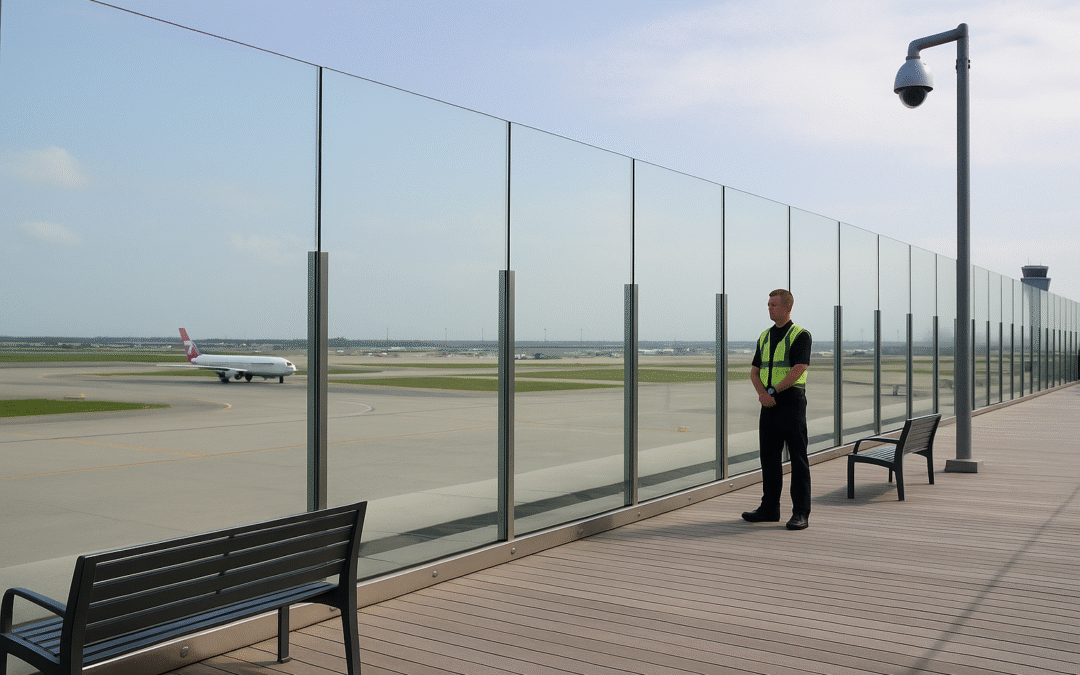If you’ve been in the aviation world long enough, you probably remember when airport observation decks were common— they were places where families could wave goodbye to loved ones, spotters could photograph aircraft, and travelers could simply enjoy watching the operation of an airport in real-time. Then 9/11 happened, and almost overnight, those decks disappeared.
Now, more than two decades later, we’re seeing a resurgence—outdoor terraces and post-security viewing areas are popping up again in terminals across the country. They’re modern, well-designed, and popular with the public. But they also raise an obvious question: have we forgotten why we shut them down in the first place?
Let’s be clear. There’s a right way to bring these spaces back, and it starts with remembering that aviation security doesn’t get to take a day off.
The Real Risks and Real Responses
When observation decks were closed after 9/11, it wasn’t just out of caution—it was because they presented a real vulnerability. An open, elevated area overlooking the ramp or terminal area creates the potential for unauthorized access, surveillance, or even physical attacks. That doesn’t mean we can’t have them anymore—but it does mean we have to be smart about how we build and secure them.
What does that look like?
- Tall, Seamless Plexiglass Barriers: You’ll see many of these new terraces use plexiglass panels that rise 8 to 10 feet high, with smooth edges and no easy handholds. The goal is to make them as unclimbable as possible. Tamper-resistant bolts keep them firmly in place.
- Surveillance Coverage: These areas should be under continuous CCTV monitoring. That’s not optional—it’s baseline. Some airports also include motion detection or intrusion alarms to catch anyone trying to breach the barrier, or even just stack chairs for a better look.
- Human Presence Still Matters: Sometimes the simplest deterrents are the most effective. Regular patrols, occasional stationing of security personnel, and even passive behavioral security (like people reporting suspicious behavior) all add layers of protection.
- Time-Based Access: Most of these areas close overnight when there are fewer staff around to keep an eye on things. That’s just common sense.
Security Is a System, Not a Single Measure
Here’s something I’ve said for years: security isn’t just a locked door. It’s a system. Every layer—from signage, to architecture, to screening, to public awareness—plays a role. You can’t rely on just one. Observation decks can absolutely return, but only when integrated into the broader security framework of the airport.
Tech Is Helping—but It’s Not a Silver Bullet
Some airports are now using intrusion detection systems that can sense pressure on the plexiglass or alert when an object is leaned against it. That’s great, and it helps. But let’s not pretend that hardware replaces human vigilance or good design. The best protection is still layered, redundant, and responsive.
Don’t Forget the Lessons of the Past
We can—and should—find ways to make airports more welcoming, more humane, and more engaging. But we should never chase aesthetics at the cost of forgetting what got us here. Before 9/11, security was piecemeal, inconsistent, and, in some places, an afterthought. We don’t need to return to this approach.
Today’s observation decks are better designed, better monitored, and far more secure than what existed decades ago. That’s progress. But let’s keep it that way by making sure security stays part of the conversation, not an afterthought once the ribbon gets cut.
Final Thought
You don’t get to pick and choose which parts of the airport are “less important” to secure. That’s not how threats work. If we’re going to reintroduce these public spaces—and I believe we can—we have to do it with our eyes wide open, backed by data, strategy, and respect for the lessons that shaped modern aviation security.

